Predictions & Data for this entry
| Model: std | climate: Am | migrate: | phylum: |
| COMPLETE = 2.6 | ecozone: TH, TN, TA, TPi | food: biPp, biD | class: |
| MRE = 0.045 | habitat: 0iFp, 0iFl, 0iFm | gender: D | order: |
| SMSE = 0.005 | embryo: Fbf | reprod: Apf | family: |
Zero-variate data
| Data | Observed | Predicted | (RE) | Unit | Description | Reference |
|---|---|---|---|---|---|---|
| ab | 5 | 4.669 | (0.06623) | d | age at birth | guess |
| Lb | 0.074 | 0.07242 | (0.02134) | cm | total length at birth | Smir1962 |
| Lp | 0.18 | 0.3282 | (0.8236) | cm | total length at puberty | Smir1962 |
| Li | 0.4 | 0.3998 | (0.0004779) | cm | ultimate total length | nina |
| Lim | 0.14 | 0.1402 | (0.001707) | cm | ultimate total length for males | nina |
| Ri | 1.111 | 1.114 | (0.002263) | #/d | max reprod rate | Bott1975 |
Uni- and bivariate data
| Data | Figure | Independent variable | Dependent variable | (RE) | Reference |
|---|---|---|---|---|---|
| tL1 | 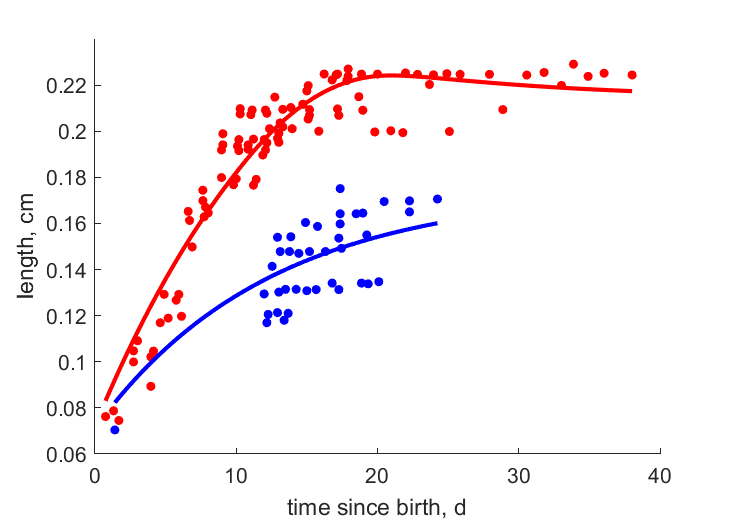 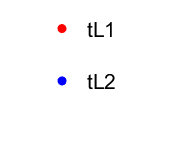 | time since birth | length | (0.04961) | Smir1962 |
| tL2 |   | time since birth | length | (0.08408) | Smir1962 |
| LWw | 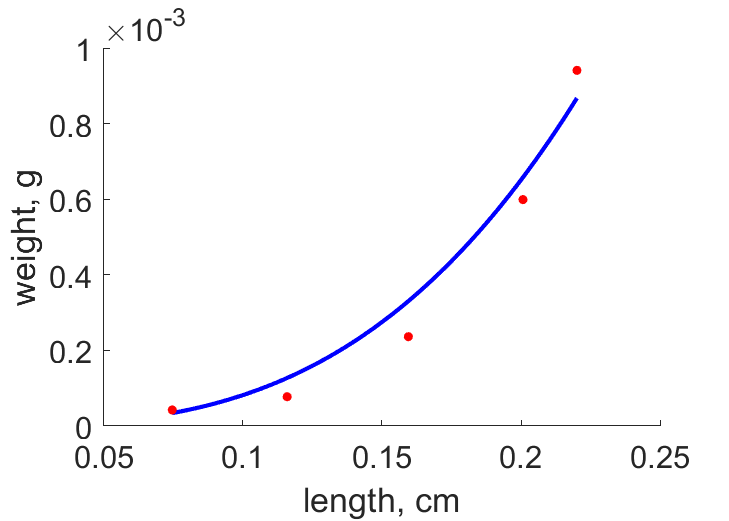 | length | weight | (0.15) | Smir1962 |
| Tam | 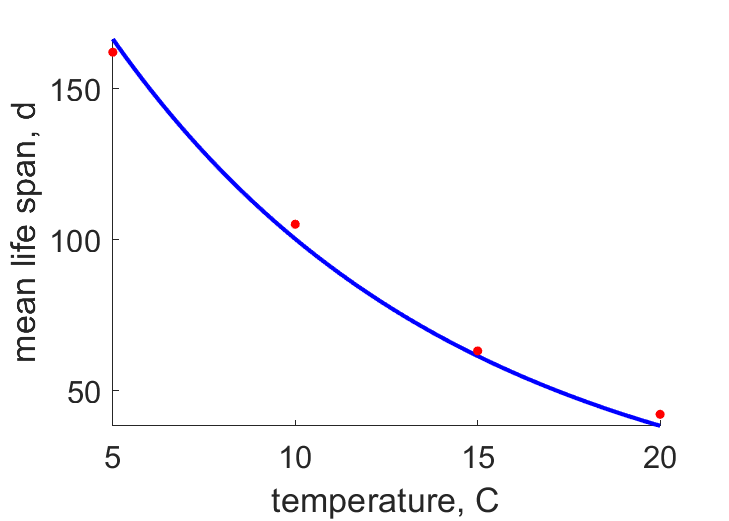 | temperature | mean life span | (0.03965) | Bott1975 |
| Ttp | 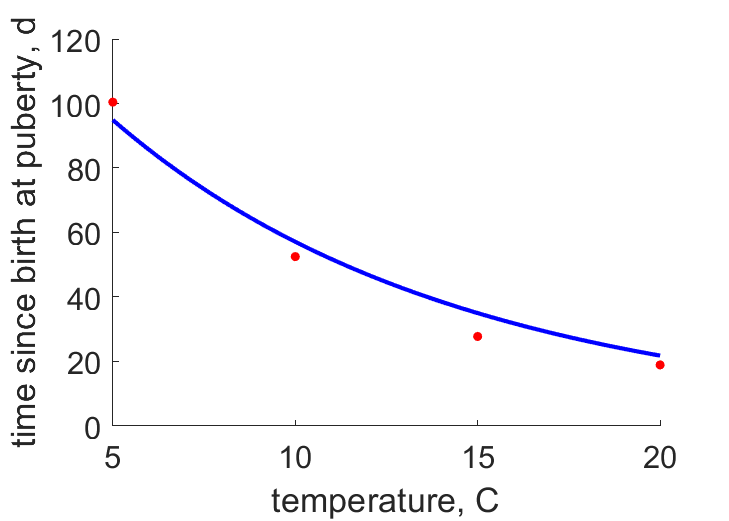 | temperature | time since birth at puberty | (0.1017) | Bott1975 |
| tL |  | time since birth | length | (0.04936) | KlemAase2020 |
Pseudo-data at Tref = 20°C
| Data | Generalised animal | Eurycercus lamellatus | Unit | Description |
|---|---|---|---|---|
| v | 0.02 | 0.03711 | cm/d | energy conductance |
| p_M | 18 | 1695 | J/d.cm^3 | vol-spec som maint |
| k_J | 0.002 | 0.002 | 1/d | maturity maint rate coefficient |
| k | 0.3 | 0.005246 | - | maintenance ratio |
| kap | 0.8 | 0.8983 | - | allocation fraction to soma |
| kap_G | 0.8 | 0.7999 | - | growth efficiency |
| kap_R | 0.95 | 0.95 | - | reproduction efficiency |
Discussion
- males are assumed to differ from females by {p_Am} only
Bibliography